21 Ducks with White Necks (With Pictures)
Correctly identifying duck species requires attention to even the smallest details—such as wing patterns, head color, chest markings, neck color, and even the shade of their feet. The goal of this website is to make that process easier by helping you recognize ducks based on the most useful identification features.
In this post, we’ll focus specifically on ducks with white necks. How many can you name?
Interestingly, while some ducks have white necks, others have only white chests with a different neck color. If you’re curious about those, we’ve covered them separately in our post about ducks with white chests.
But back to today’s topic—ducks with white necks. There are quite a few species, but here are the most common ones you should know.
- 1. Mallard (Male)
- 2. Northern Pintail
- 3. Common Goldeneye
- 4. Barrow’s Goldeneye (Male)
- 5. Bufflehead (Male)
- 6. Common Shelduck (Male)
- 7. Paradise Shelduck
- 8. Smew (Male)
- 9. Common Eider (Male)
- 10. King Eider
- 11. Red-breasted Merganser
- 12. Swedish Blue Duck
- 13. Long-tailed Duck
- 14. Torrent Duck
- 15. Manky Mallards
- 16. Some Muscovy Ducks
- 17. Bronze-winged Duck
- 18. Wood Duck (Male)
- 19. White-faced Whistling Duck
- 20. Cape Teal
- 21. White-headed Steamer-Duck
1. Mallard (Male)
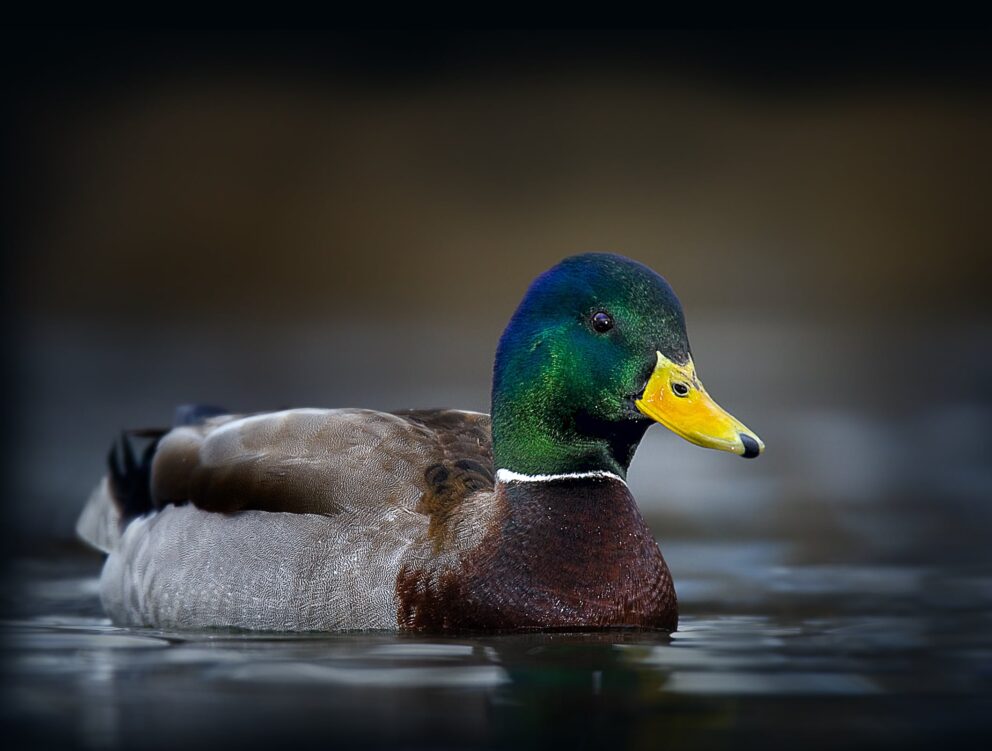
Spotting a male Mallard is easy once you notice the clean white neck ring that sharply separates its emerald-green head from its chestnut-brown chest. This white collar wraps neatly around the neck, like a well-fitted band, especially obvious when the bird stretches or turns in bright light. Aside from its looks, the Mallard is one of the most adaptable duck species on Earth, found across city parks, wetlands, rice fields, and even urban ponds. Their populations remain stable because of their ability to thrive close to humans and their willingness to interbreed with other duck species, which sometimes leads to hybrid varieties like Manky Mallards.
2. Northern Pintail
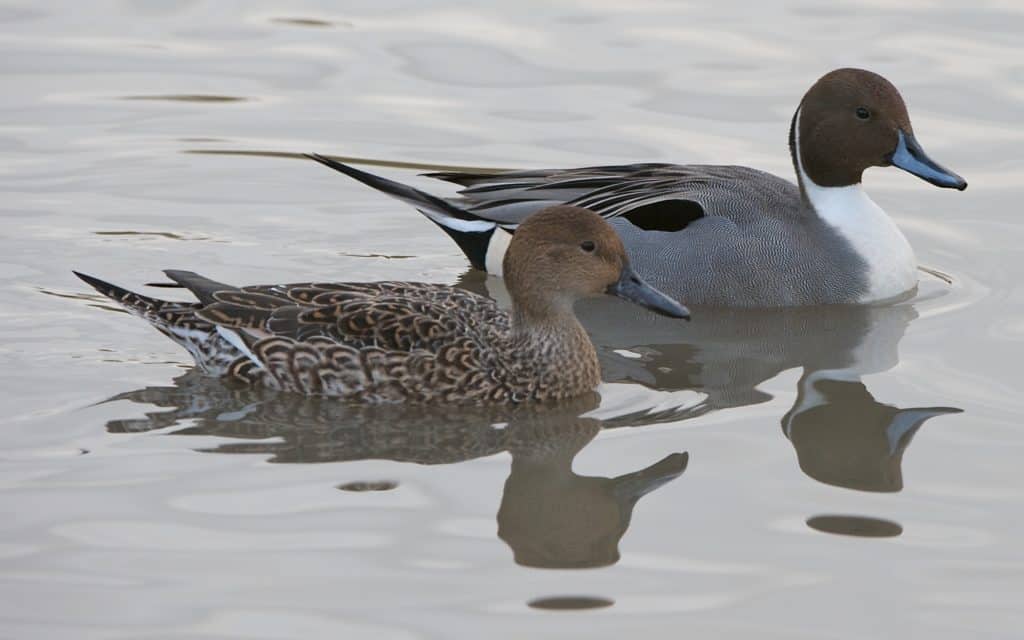
Grace and elegance—those are the first words that come to mind when you see a Northern Pintail. The male’s neck is snow-white, extending smoothly up to its chocolate-brown head, forming a long, slender contrast that emphasizes its slim frame. What makes this species particularly interesting is its migration journey. Northern Pintails travel thousands of miles from Arctic breeding grounds to warmer wintering areas in Africa, Asia, or Central America. Unfortunately, despite their beauty, their population has been declining due to habitat loss in breeding and stopover wetlands.
3. Common Goldeneye
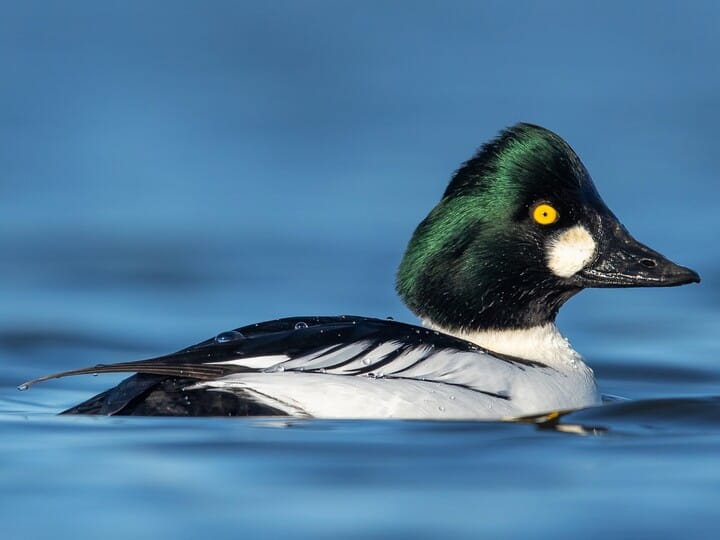
Instead of a full white neck, the male Common Goldeneye has a crisp white patch along the front of the neck and lower face, contrasting with its dark glossy green head and black back. This white extends to the upper chest, creating a sharp, bold look. Common Goldeneyes are cavity nesters, often choosing tree holes left by woodpeckers, sometimes as high as 40 feet off the ground. Hatchlings make a daring leap to the ground within a day of hatching—without any help from their mother.
4. Barrow’s Goldeneye (Male)
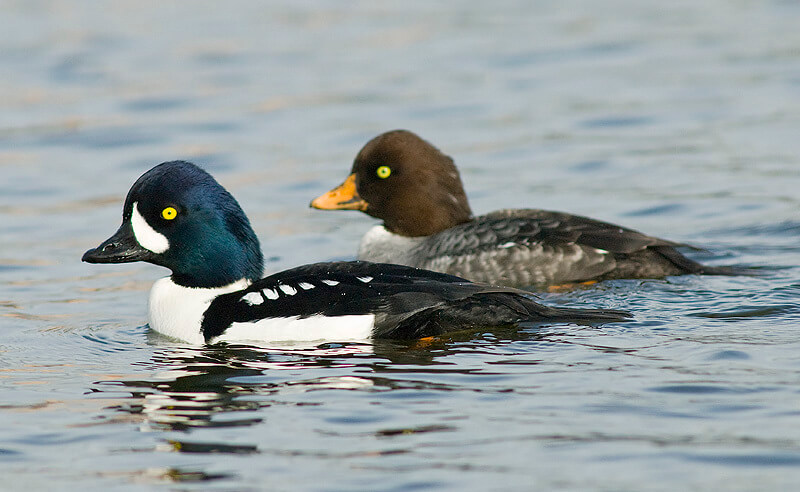
Striking and refined, the male Barrow’s Goldeneye has a bright white patch along the front of its neck and chest that contrasts sharply with its dark, glossy purple-black head. This white area connects to its white sides and patterned black-and-white back. Unlike the Common Goldeneye, Barrow’s Goldeneye prefers more remote, mountainous lakes and fast-flowing rivers. Interestingly, they often return to the same nesting site year after year, showing a strong sense of site loyalty, and females may even nest in tree cavities dozens of feet above the water.
5. Bufflehead (Male)
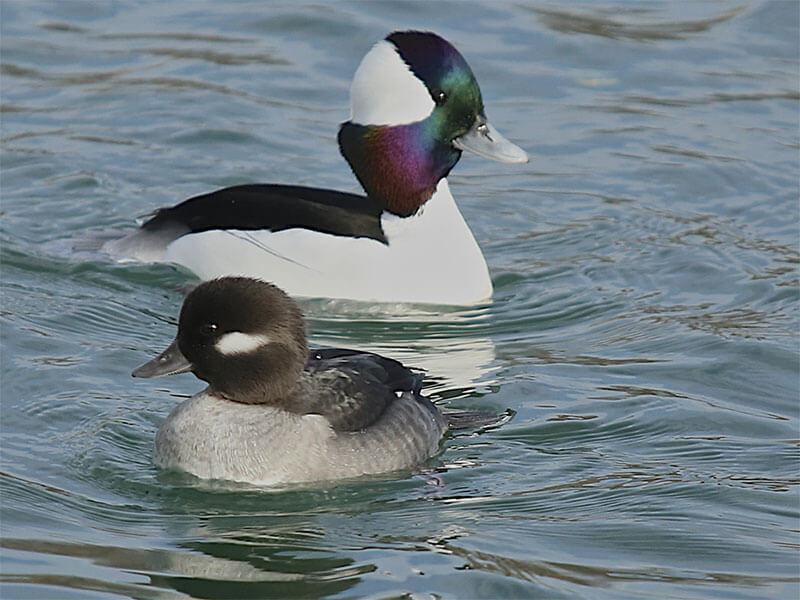
Think of a compact, energetic diver with a clear white chest that gleams against its dark back and brilliant iridescent head. The male Bufflehead features a bright white patch on the back of its head and a fully white chest that stretches down to its sides. Unlike many ducks, Buffleheads are monogamous and often stay with the same mate for multiple years. They nest almost exclusively in old Northern Flicker woodpecker holes, preferring smaller cavities where larger species cannot fit.
6. Common Shelduck (Male)
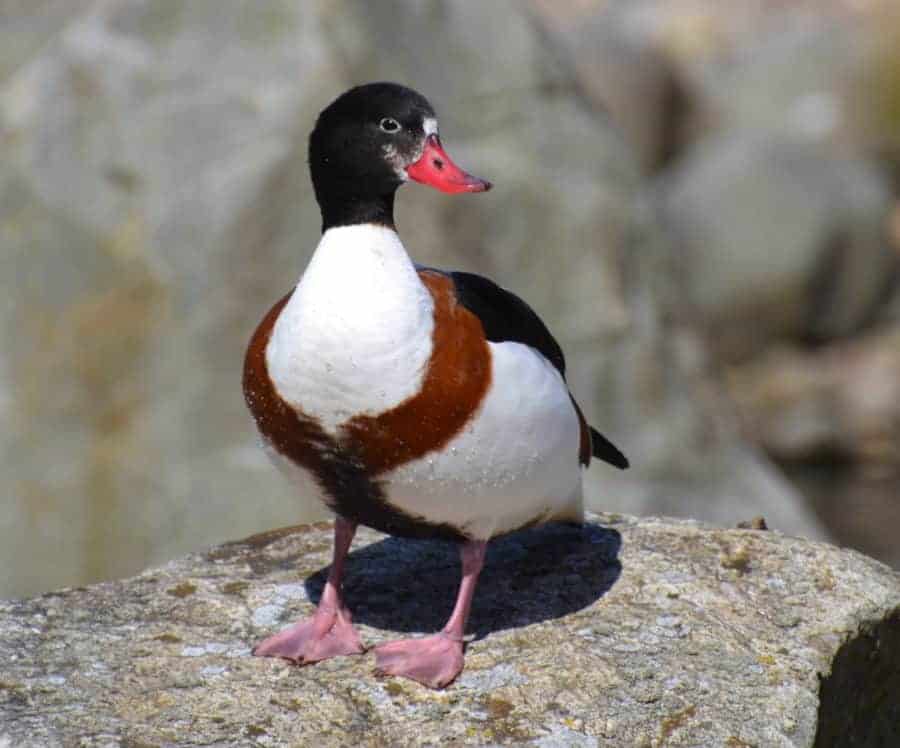
The male Common Shelduck wears its white neck like a fine garment. Although most of its body is white, the neck’s upper boundary is clearly defined by a dark green-black head and a prominent chestnut band around the upper chest. These ducks are more goose-like in behavior and size, commonly found in tidal mudflats and estuaries. During breeding, males develop a bright red knob at the base of their bill, which becomes especially vivid to attract females.
7. Paradise Shelduck
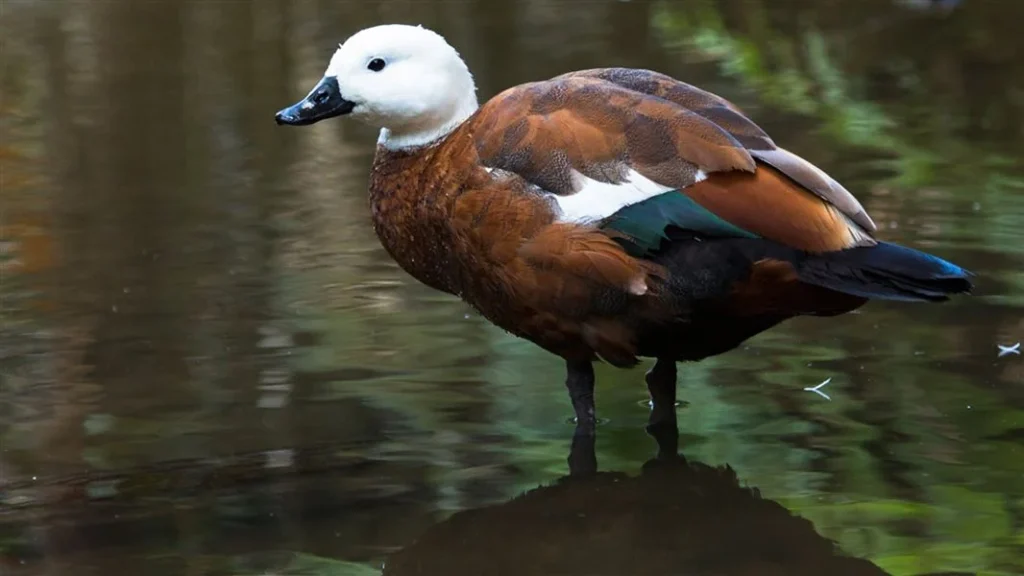
In the Paradise Shelducks, it’s the female that stands out most with her pure white head and neck, unlike the predominantly dark male. However, both sexes can show lighter coloring at the base of the neck. Native to New Zealand, this species is unique in that the female is more colorful than the male—opposite of most duck species. They form lifelong pair bonds and are highly territorial during breeding, often returning to the same grassland or wetland year after year.
8. Smew (Male)
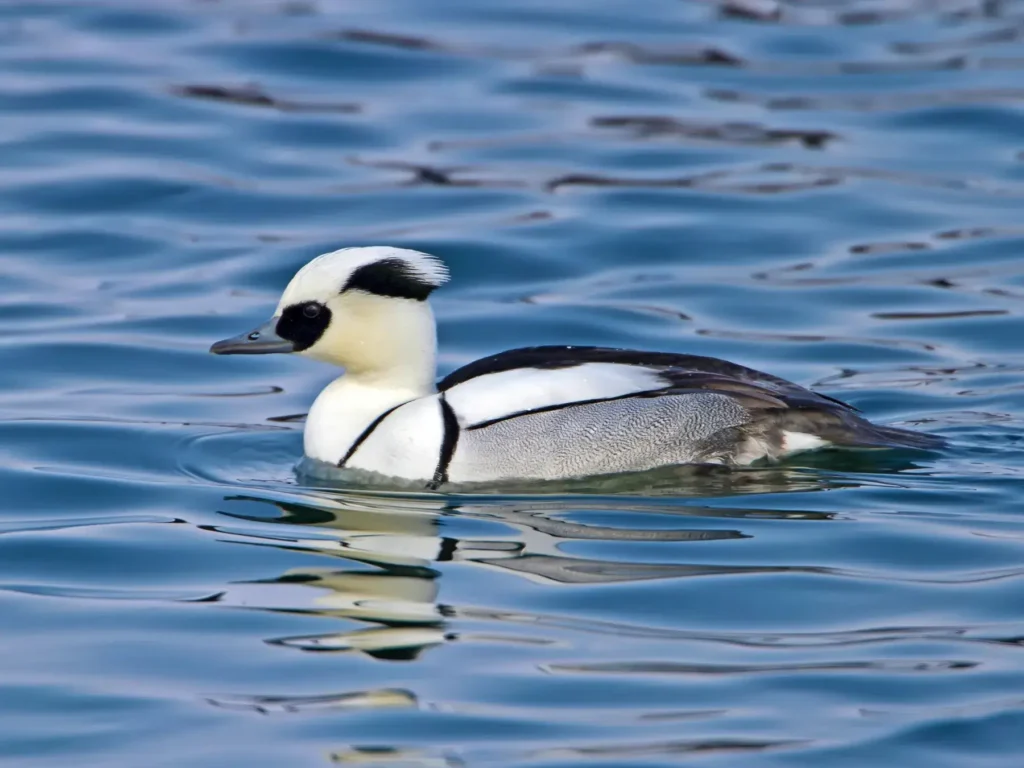
The male Smew features a crisp white neck and body interrupted only by sharp black markings. Its white neck blends into a snowy-white head with a distinct black mask around the eyes. This small merganser is a winter visitor to many parts of Europe and Asia, preferring ice-free lakes and rivers. Unlike many ducks, it is exceptionally quiet, and its subtle whistling calls are rarely heard.
9. Common Eider (Male)
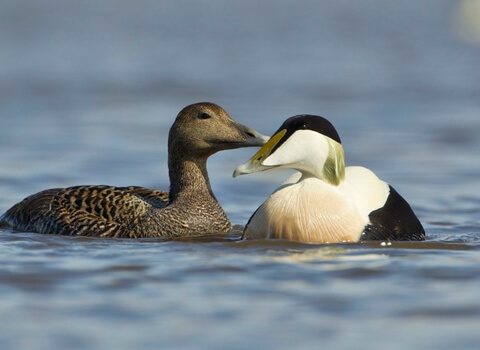
Draped in soft white across the neck and upper back, the male Common Eider contrasts this with a black crown, belly, and tail. A hint of pale green graces the back of its head, enhancing its elegant appearance. These sea ducks are known for producing the world’s famed eiderdown—extremely soft and insulating feathers collected from their nests. They breed in coastal Arctic and sub-Arctic regions and form large winter flocks along rocky shorelines.
10. King Eider
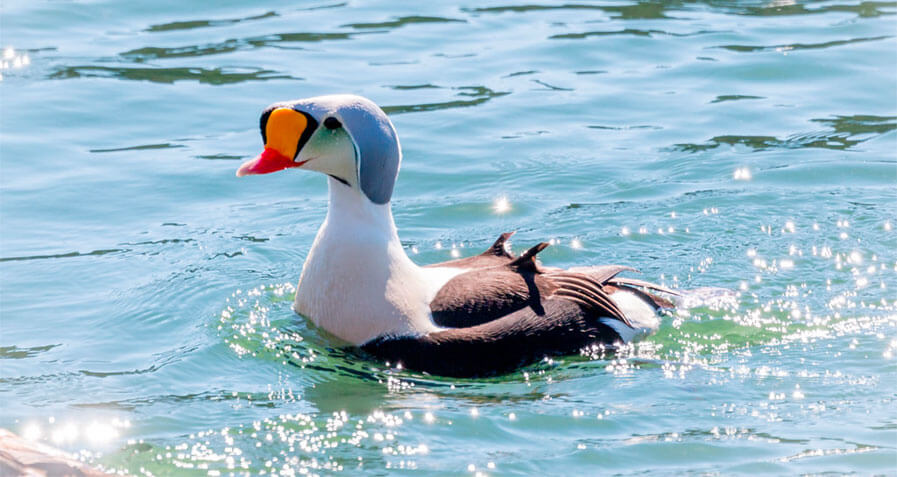
The male King Eider has a white neck that blends smoothly into its white chest. This is set off by a black belly and a colorful head with light blue, orange, and green tones. Their most iconic feature is the orange, swollen shield at the top of the bill. King Eiders are deep-diving sea ducks, capable of plunging to depths of over 50 meters to forage for mollusks and crustaceans in icy Arctic waters.
11. Red-breasted Merganser
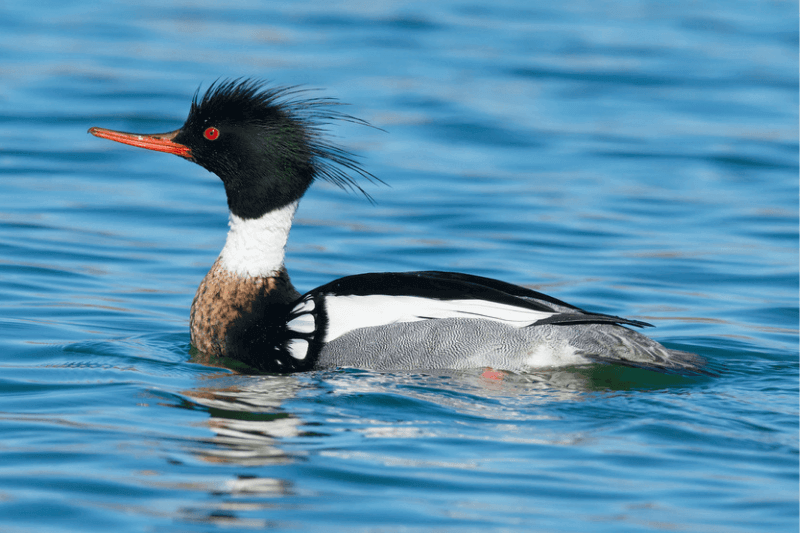
While less boldly white than others, the male Red-breasted Merganser shows a white neck band that separates its dark green head from its reddish-brown chest. This subtle white collar helps distinguish it from similar species. Known for being one of the fastest flying ducks, it can reach speeds over 80 mph. These diving ducks prefer coastal bays and estuaries, especially in winter, and their spiky crest gives them a slightly unkempt, rockstar appearance.
12. Swedish Blue Duck
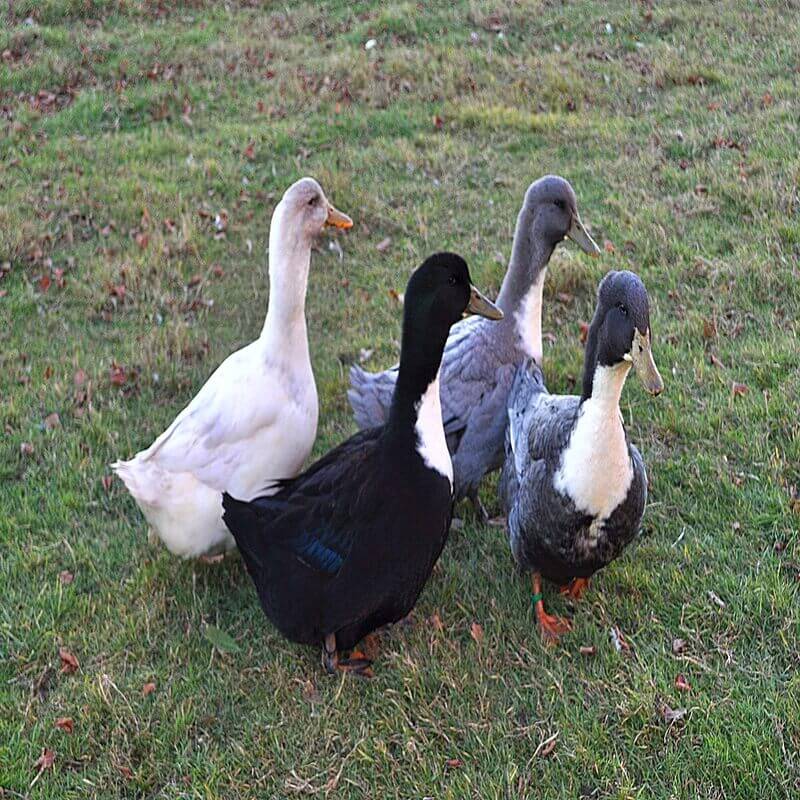
This domestic breed often has a pale or white neck patch that contrasts against slate-blue, black, or silver plumage, depending on the individual. While their appearance can vary, many Swedish Blue Ducks display a noticeable white bib or chest extending toward the neck, making them resemble domestic Mallards in pattern. Developed in Sweden in the 19th century, they are hardy farm ducks valued for both their meat and egg production, and they adapt well to a range of climates and environments.
13. Long-tailed Duck
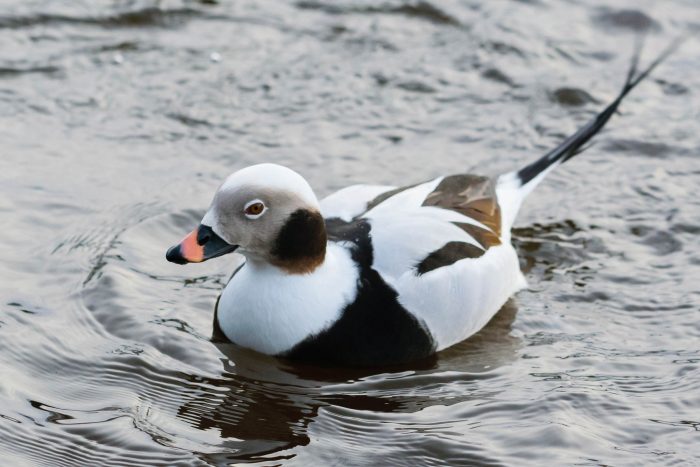
The Long-tailed Duck doesn’t have a completely white neck, but the male’s winter plumage shows a striking white face and neck area that blends into a dark cheek patch and black chest. This gives the illusion of a pale or white neck when seen from certain angles. These ducks are exceptional divers—plunging as deep as 200 feet to find crustaceans and mollusks, making them some of the deepest-diving ducks in the world.
14. Torrent Duck
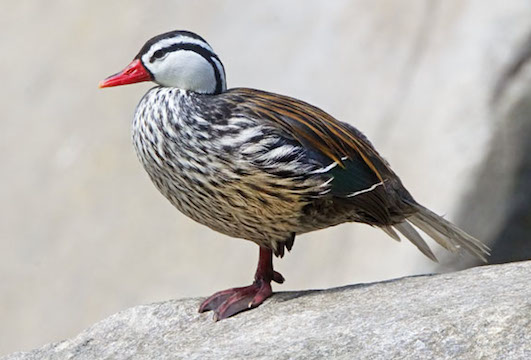
While Torrent Ducks don’t have a fully white neck, males feature white color running down the sides of the neck, contrasting with their black crown and dark eye stripe. They also have bold white on the cheeks and throat. What sets them apart isn’t just their looks but where they live—swift mountain rivers in the Andes. They are incredible swimmers, using their streamlined bodies and strong legs to battle powerful currents few other ducks could tolerate.
15. Manky Mallards
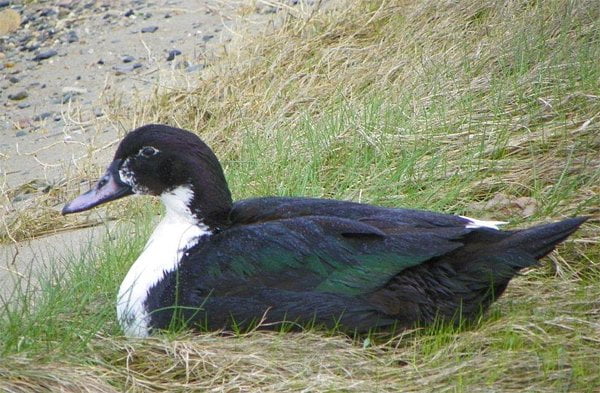
Manky Mallards are domesticated Mallards or hybrids that often display unusual plumage, and many individuals sport white on the neck—sometimes forming partial rings or patches instead of the classic full white collar of a wild male Mallard. Because they’re hybrids or selectively bred, no two Manky Mallards look exactly alike. Their unpredictable genetics make them common in urban ponds where domestic ducks mix with wild Mallards, resulting in birds with surprising patterns and colors.
16. Some Muscovy Ducks
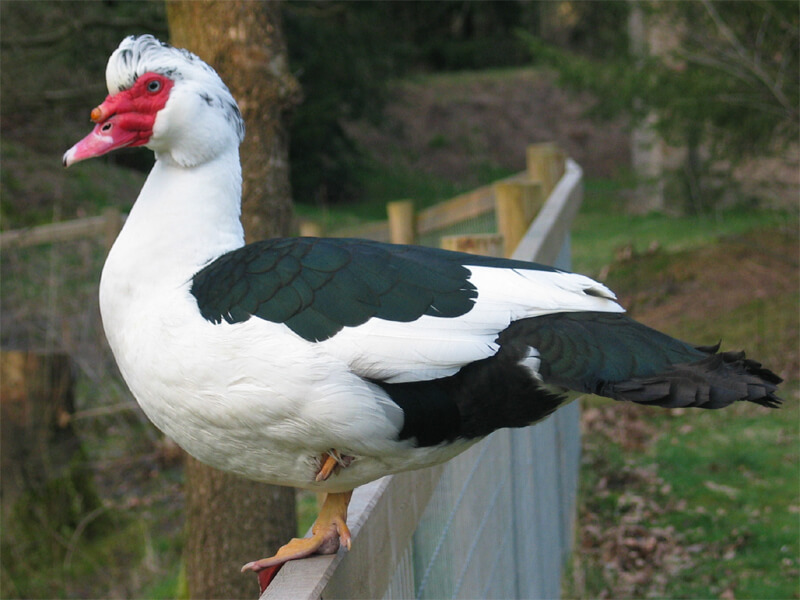
Certain Muscovy Ducks, especially domestic varieties, can show white necks or large white patches extending from the chest to the neck. While wild Muscovies are mostly dark, domestic ones come in patterns of white, black, chocolate, or mottled mixes. Muscovies are known for being quiet compared to other ducks—they don’t quack, but instead hiss or coo. They are also excellent perchers, thanks to their strong claws that allow them to roost in trees.
17. Bronze-winged Duck
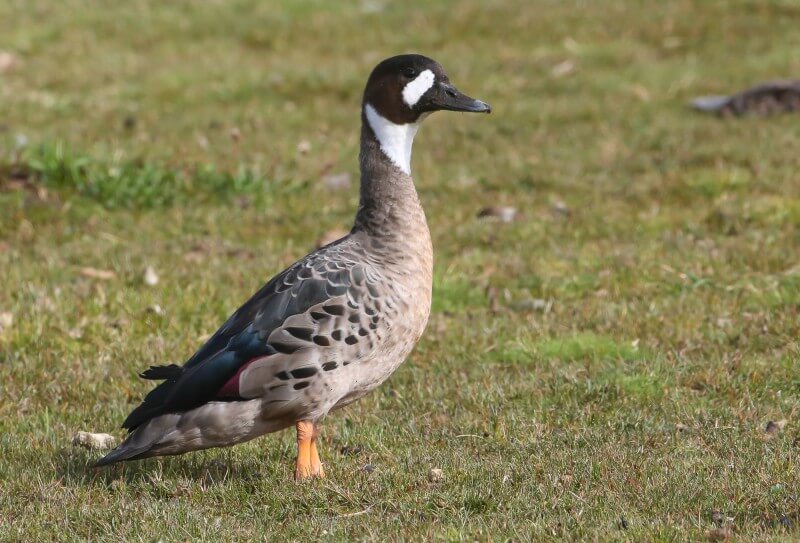
The Bronze-winged Duck doesn’t have a fully white neck, but it does show pale or whitish markings on the throat and upper neck that contrast with its darker head and chestnut-brown body. What makes this species particularly special is its habitat—fast-moving streams and forested rivers in South America. It’s a shy, uncommon duck that prefers secluded areas, which makes spotting one a real treat for birdwatchers.
18. Wood Duck (Male)
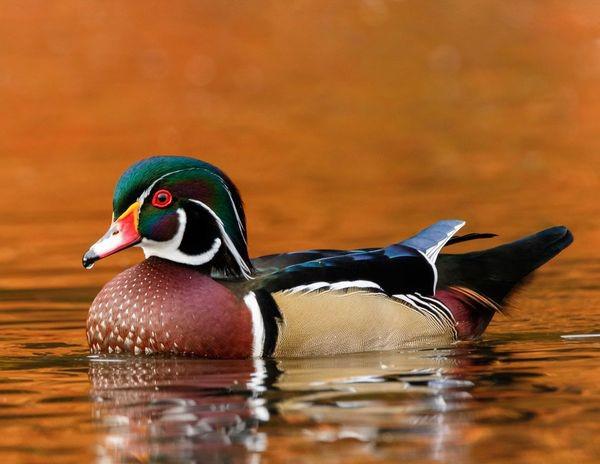
The male Wood Duck has a white throat that extends up the neck in distinct finger-like lines, creating a noticeable white pattern along the side of the neck. This pattern contrasts with its iridescent green crest and chestnut breast. Beyond its beauty, Wood Ducks are known for nesting in tree cavities and even high above the ground. Ducklings leap bravely from the nest to the ground or water within a day of hatching, sometimes from heights over 20 feet.
19. White-faced Whistling Duck
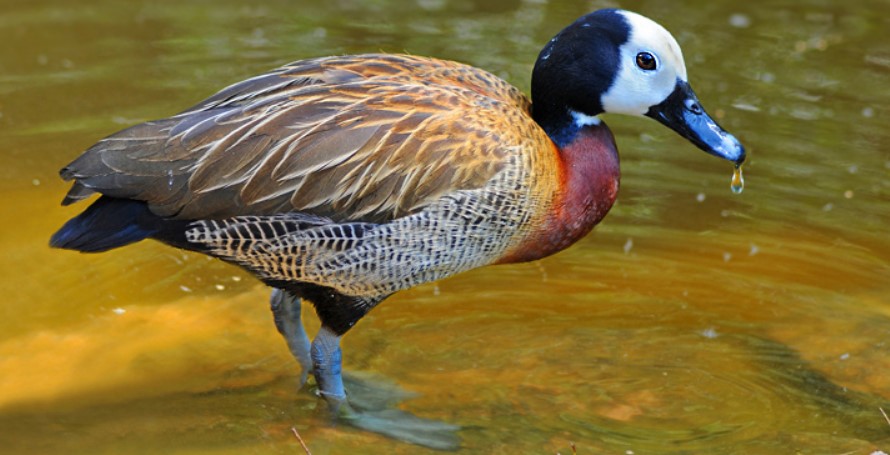
White-faced Whistling Ducks have a striking white face and upper neck that clearly contrasts with their dark crown and chestnut breast. They’re named for their distinctive high-pitched whistling calls, which you’ll often hear before you see them. Found in Africa and South America, these ducks gather in large flocks around wetlands and rice fields and are known for being especially social and vocal.
20. Cape Teal
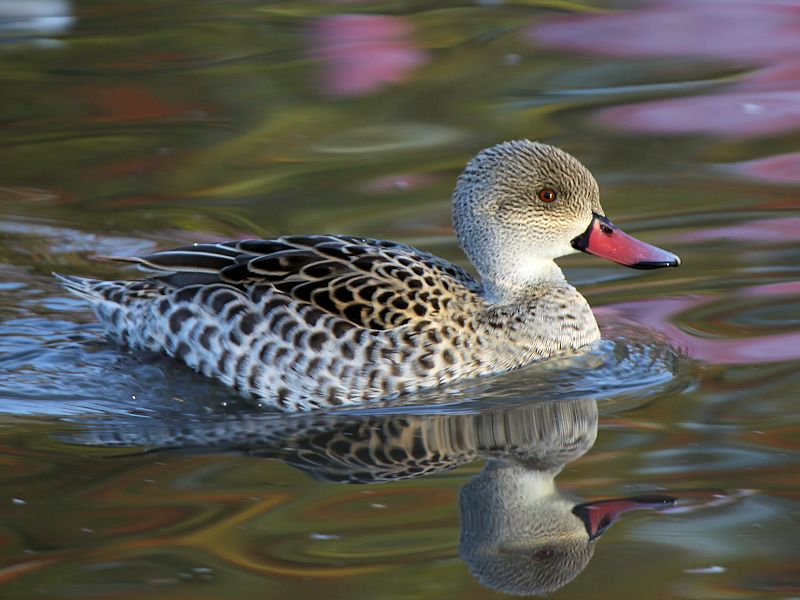
The Cape Teal has a pale or whitish throat and upper neck that subtly contrasts against its light gray body and dotted plumage. One of the most recognizable features is its pinkish-red bill. Native to southern Africa, this duck prefers shallow salt pans and lagoons. Unlike many ducks, the Cape Teal is relatively quiet and often seen alone or in small groups rather than large flocks.
21. White-headed Steamer-Duck
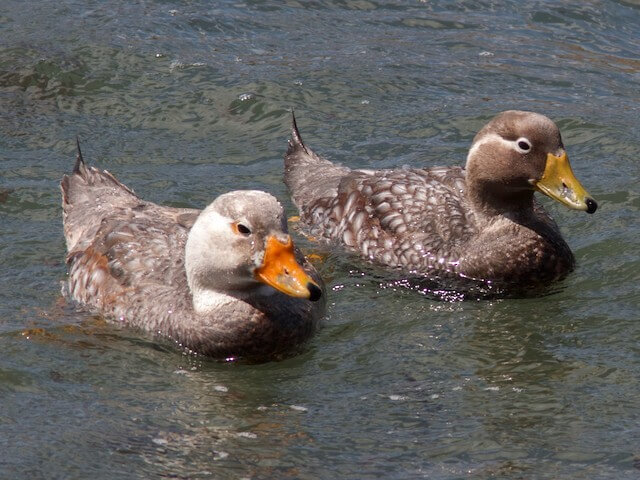
The White-headed Steamer-Duck has a mostly white head and upper neck, which stand out sharply from its dark gray-brown body. These ducks are flightless and get their name from their unusual way of moving across the water—using their wings and feet in a churning motion that looks like a steamboat’s paddle wheels. Found along the coasts of southern Argentina, they are tough, territorial birds often seen battling strong surf and cold waters.
